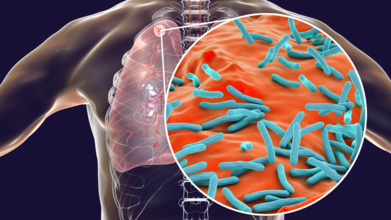- Health Conditions A-Z
- Health & Wellness
- Nutrition
- Fitness
- Health News
- Ayurveda
- Videos
- Medicine A-Z
- Parenting
- Web Stories
This Is The Healthiest Type Of Milk And No It Is Not Cow Milk

Credit: Canva
Dairy aisles have exploded with different types of cow's milk and its alternatives. While cow milk still tops the global consumption list, it is not the healthiest. Notably, there is a whole war going on over certain types of milk being healthier than others, there is no single best milk for everyone.
Here Are 7 Types Of Healthiest Milk Options:
1. Hemp milk
Hemp milk is made from ground, soaked hemp seeds, which are high in protein and omega-3 and omega-6 fatty acids. According to a 2018 review, hemp milk may help lower cholesterol levels and thyroid hormones. The authors also note that because hemp milk doesn't contain lactose, it may be a nutritious alternative to cow's milk and several plant-based milks.
Hemp milk is virtually carb-free, but some brands add sweeteners and added sugars. Not only do these increase the carb content, but added sugars are also associated with several chronic conditions, such as obesity, heart disease, and high blood pressure (hypertension), among others.
2. Oat milk
Oat milk is made by soaking whole oats. It is one of the most popular and fast-growing cow's milk alternatives in the world. According to a 2023 review, the volume of oat milk sales has increased by 71% from 2017 to 2018, and global annual oat milk sales increased by 700% from 2018 to 2019. Nutritional values can vary by brand and depend on how or whether the milk is fortified. Oat milk is naturally sweet from the oats and high in carbs. It also contains soluble fibre, which makes it creamier.
3. Almond milk
Almond milk is made by soaking almonds in water and then blending and straining away the solids. It's a tasty nondairy milk alternative for people who either can’t tolerate or choose not to drink dairy milk, but it’s not safe if you have a tree nut allergy. Unsweetened almond milk is low in calories and much lower in carbohydrates than cow’s milk, making it a good choice for a lower-carb diet.
That said, it is low in protein and many other nutrients. Many brands are fortified with calcium and vitamins A and D, but the amounts can vary by brand. Some brands also contain additives like carrageenan to thicken and prevent separation.
4. Coconut milk
Coconut milk is squeezed from the white flesh of a coconut. It has a pleasant flavour, and it’s a good nondairy milk alternative that is safe if you have a tree nut allergy. Most coconut milk packaged in cartons is blended with water to give it a consistency similar to that of cow’s milk. It has even less protein than almond milk, but many brands are fortified with nutrients like vitamins B12, D, and A, as well as some minerals.
On the other hand, canned coconut milk is usually intended for culinary purposes. It tends to be higher in fat, is unfortified, and has a much more distinctive coconut flavour. Coconut milk is a bit higher in fat than other plant milk, but the medium-chain triglycerides (MCTs) in coconuts are linked to some heart health benefits, such as higher HDL (good) cholesterol levels.
5. Cow's milk
Cow’s milk is the most commonly consumed dairy milk and a good source of high-quality protein. It is naturally rich in calcium, B vitamins, and many minerals. It’s also often fortified with vitamins A and D, making it a very nutritious food for both children and adults.
However, the protein in cow’s milk makes it one of the most common food allergens. Most children outgrow it, but some people have a lifelong allergy and need to avoid this beverage and foods containing it. In addition, an estimated 65% of the world’s population has some degree of difficulty digesting lactose, a type of sugar in cow’s milk.
6. A2 Milk
Approximately 30% of the protein in cow’s milk comes from casein. Most dairy cows in the United States produce milk that has two main types of casein — A1 beta-casein and A2 beta-casein. When A1 beta-casein is digested, a peptide called beta-casomorphin-7 (BCM-7) is produced. It is linked to digestive symptoms similar to those of lactose intolerance in some people, including gas, bloating, constipation, and diarrhoea.
According to a 2023 review, four studies reported that A2 milk may be easier to digest than cow’s milk with A1. That said, the authors note that more research is needed in humans to fully understand the effects of A1 and A2 casein proteins on digestive health.
7. Soy Milk
Nutritionally, soy milk is closest to cow’s milk. This is partly because soybeans are an excellent source of complete protein and soy milk is fortified to closely resemble cow’s milk. Soy milk is a great option if you avoid dairy but want a high-protein milk beverage. Soy has been controversial because most soybeans grown in the United States are genetically modified to resist the herbicide glyphosate.
Better Diet Could Help Defeat Tuberculosis, Says ICMR Study Backed by WHO

(Credit - Canva)
The dangers of tuberculosis may seem like the thing of the past; however, its effects still remain. The World Health Organization has speculated that TB has returned to being the leading cause of death all around the world after 1.25 million people died of it in 2023. In the same year, an estimated 10.8 million people fell ill with TB with 6 million men, 3.6 women and 1.3 million children. The surprising fact is that the TB present in all these countries, is curable.
There are many factors that affect how well a country tackles TB with. A study funded by the Indian Council of Medical Research (ICMR) has shown that better nutrition can significantly reduce tuberculosis (TB) cases and deaths. The World Health Organization (WHO) has recognized these findings and included them in its updated global guidelines for controlling the disease.
The main goal of the study was to see how giving nutritional support to people living with TB patients would affect whether they got the disease themselves.
What Are Some Factors That Can Help Cure TB?
Researchers worked with 2,800 TB patients and their families in four districts of Jharkhand, India. The study, published in the medical journal The Lancet, noted that in India, TB and poor nutrition are very common at the same time, especially among patients and in the general population.
In the study, all TB patients received food for six months. However, only the families in the "intervention group" received monthly food packages and micronutrients. The researchers followed up with all participants to see how many new TB cases appeared over time.
How Does Nutrition Impact TB?
The study, which ran from 2019 to 2021, found that giving nutritional support to families of TB patients led to a significant drop in new TB cases. This was the first study of its kind to show that nutritional help can substantially reduce the spread of TB within a household.
The study concluded that this approach, which combines medical and social support, could help speed up the fight against TB in communities where both TB and poor nutrition are big problems.

Nutrition and Tuberculosis: Why Does It Impact So Many People?
According to a 2025 study published in the Tropical Medicine and Infectious Disease, looked at how nutrition programs for people with tuberculosis (TB) are working in India. Researchers talked to TB patients, their family members, and healthcare providers in five different states between August 2023 and April 2024. The goal was to understand their experiences and thoughts on getting nutritional help.
Understanding Nutrition
Patients and their families understood that good nutrition is important for treating TB. However, they faced challenges in getting the right foods.
Changes in Diet
While many tried to eat more protein, they often struggled with food insecurity—meaning they didn't have enough food because they were poor.
Issues with Financial Aid
The Direct Benefit Transfer (DBT) program, which gives money directly to people, had problems. Participants felt the money wasn't enough and that there were gaps in how they could access it.
Preferred Delivery Method
People preferred getting food and support directly from TB treatment centers. They were less keen on using other systems or middlemen to get their nutritional help. Based on these findings, the study suggests a few changes to improve the program:
- Provide more protein-rich food and increase the financial support to better meet people's needs.
- Fix the problems with the DBT program to make sure people can easily get the money they are given.
- Consider giving ready-to-eat food directly to patients at TB treatment centers.
Shoppers Beware From The Radioactive Shrimp! Walmart Recalls Popular Frozen Seafood In 13 States

Credits: Canva
Walmart has recalled certain lots of its frozen, raw shrimp sold across 13 states after federal officials detected traces of radioactive contamination. The U.S. Food and Drug Administration (FDA) confirmed that the shrimp may contain Cesium-137, a radioactive isotope, and urged consumers to dispose of the affected products immediately.
What Triggered the Recall
The FDA said it asked Walmart to pull three lots of its Great Value brand frozen shrimp from store shelves after routine inspections revealed contamination. The agency detected Cesium-137 in both shipping containers and in a sample of frozen breaded shrimp imported from Indonesia.
Although the levels found were far below the FDA’s intervention threshold, officials said the recall was issued as a precaution.
The contamination was linked to products processed by P.T. Bahari Makmur Sejati, operating as BMS Foods of Indonesia. U.S. Customs and Border Protection first raised the alarm after detecting Cesium-137 in containers arriving at ports in Los Angeles, Houston, Miami, and Savannah, Georgia.
Potential Health Concerns
Cesium-137 is a byproduct of nuclear activity, including weapons testing, nuclear power plant operations, and accidents. While trace amounts of the isotope are already present in the environment, including soil and food, prolonged exposure can increase the risk of health problems.
ALSO READ: Are Power Plant Emissions Really Not Dangerous, As The EPA Claims?
“The risk from the recalled shrimp is quite low,” said Donald Schaffner, a food safety expert at Rutgers University. Still, FDA officials emphasized that minimizing unnecessary exposure is important. “If you have recently purchased raw frozen shrimp from Walmart that matches this description, throw it away,” the agency said in a statement.
What Consumers Should Look For
The recall applies specifically to Great Value brand frozen raw shrimp with the following lot codes:
- 8005540-1
- 8005538-1
- 8005539-1
All three carry best-by dates of March 15, 2027. The products were distributed in Alabama, Arkansas, Florida, Georgia, Kentucky, Louisiana, Missouri, Mississippi, Ohio, Oklahoma, Pennsylvania, Texas, and West Virginia.
Customers who purchased the shrimp can return them to any Walmart store for a full refund, or simply discard them.
How the Contamination Was Found
FDA investigators collected several samples following the customs alert and discovered one contaminated batch of breaded shrimp. The containers flagged at the ports were denied entry into the U.S. But officials later learned that Walmart had received products from shipments that slipped through without triggering contamination warnings.
As a result, Walmart moved quickly to issue a recall. “As soon as we were made aware of the FDA findings, we took immediate action to remove the affected products from our stores,” a Walmart spokesperson said.
Read more news on food recalls
Why Cesium-137 Raises Red Flags
Cesium-137 has been a global concern since the mid-20th century when nuclear testing and accidents released it into the environment. Unlike naturally occurring elements, Cesium-137 is man-made and has a half-life of about 30 years, meaning it can persist in ecosystems for decades.
Ingesting contaminated food over time, even at low levels, could contribute to radiation exposure. While the FDA stressed that the amounts detected in the shrimp were well below harmful levels, experts say cumulative exposure is worth avoiding.
A Precautionary Step
The FDA said its investigation into BMS Foods of Indonesia is ongoing, with inspectors reviewing shipping and production practices. The agency also assured the public that the contamination detected does not represent a widespread risk to the U.S. food supply.
“Consumers should understand that this is not a major food safety crisis,” Schaffner noted. “It is a targeted recall, and the system worked as it should to identify, contain, and address the issue.”
What Happens Next
For now, the FDA continues to monitor imports from the supplier and will take further steps if necessary. Walmart has pledged full cooperation with regulators and stressed that customer safety is its priority.
While the health risk is considered minimal, officials say the recall underscores the importance of vigilance in food safety systems. By acting quickly, they hope to reassure consumers and prevent long-term exposure to contaminants that could pose problems over time.
This Bedtime Drink Could Help You Lose Weight While Balancing Blood Sugar

Credits: Canva
Weight management and blood sugar control are two of the biggest health concerns today, often linked to lifestyle-related conditions such as diabetes, obesity, and metabolic syndrome. While diet and exercise remain the foundation for addressing them, research increasingly points to certain simple, everyday habits that may provide additional support. One such habit involves a bedtime drink that could play a small but meaningful role in promoting weight loss and stabilising blood sugar overnight.
First things first, Apple Cider Vinegar (ACV) is not your average vinegar. Good-quality apple cider vinegar comes with something called “the mother”. This “mother” is the cloudy stuff floating around at the bottom of the bottle, made up of good bacteria, proteins, and enzymes. It is where a lot of the health magic lives.
The acetic acid in vinegar slows down how fast your stomach empties and how quickly sugar gets into your bloodstream. This results in fewer blood sugar spikes, fewer cravings, and possibly, fewer late-night binge eating sessions.
Also Read: Shoppers Beware From The Radioactive Shrimp! Walmart Recalls Popular Frozen Seafood In 13 States
How Vinegar Helps In Weight Loss
ACV is not a miracle weight-loss potion that will have you waking up with abs. But studies do hint at some benefits. Drinking diluted ACV can make you feel fuller, so you do not attack breakfast. At night, it may even work quietly to improve how your body handles sugar while you snooze.
Stable blood sugar means fewer mood swings and fewer 4 pm “must eat chocolate now or will scream” moments. Some small studies even suggest acetic acid might nudge your metabolism into burning a smidge more fat and storing a little less.
The Blood Sugar Bedtime Trick
For anyone watching their blood sugar, a glass of water with a spoon or two of ACV before bed has been linked to lower fasting blood sugar the next morning. Because vinegar helps your body become more sensitive to insulin, which means your body handles the sugar it already has more efficiently.
To be clear, this does not replace medication or advice from your doctor. But as a nightly ritual, it could give your system an extra hand.
How Not to Burn Your Throat
Do not, under any circumstance, chug ACV straight from the bottle. ACV is super acidic and can wreck your teeth or irritate your throat.
Here is how to do it properly:
- Mix 1–2 teaspoons in a big glass of water (never more than that)
- Drink it about 20–30 minutes before bed
- Use a straw to save your teeth from acid erosion
- Rinse your mouth afterwards
- If it still tastes like sadness, stir in a dash of honey or cinnamon
Not Everyone’s Cup of Vinegar
If you’ve got stomach ulcers, reflux, kidney issues, or you are on meds for diabetes or heart health, double-check with your doctor before hopping on the ACV bedtime train. It can mess with certain medications or make existing issues worse.
Does sipping apple cider vinegar before bed melt away fat overnight?
No. But it can be an easy, low-effort habit that gives your body a little boost: steadier blood sugar, fewer cravings, and maybe a small push toward weight loss.
© 2024 Bennett, Coleman & Company Limited

